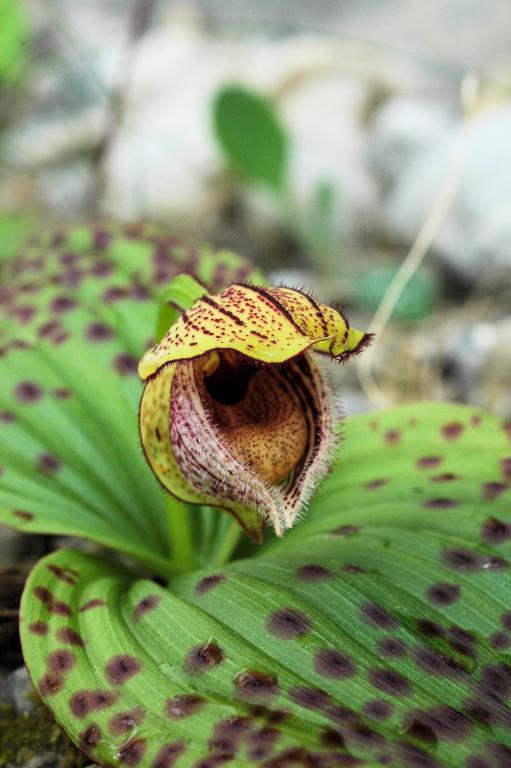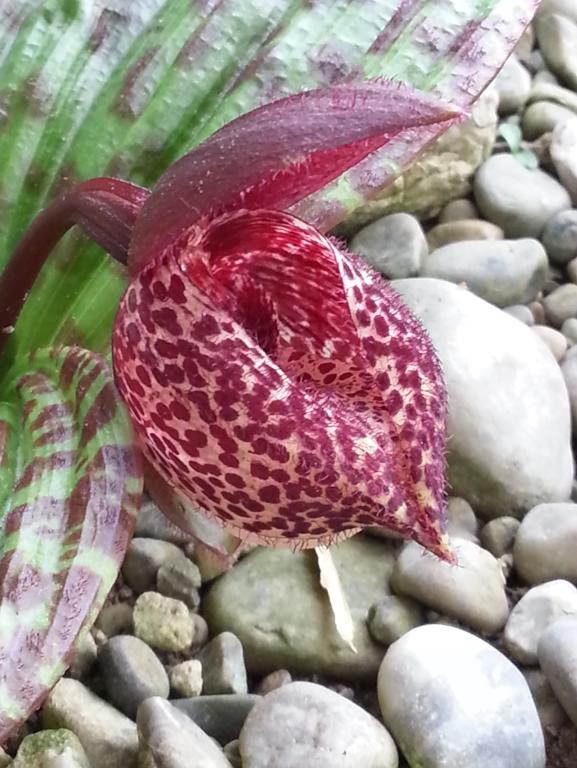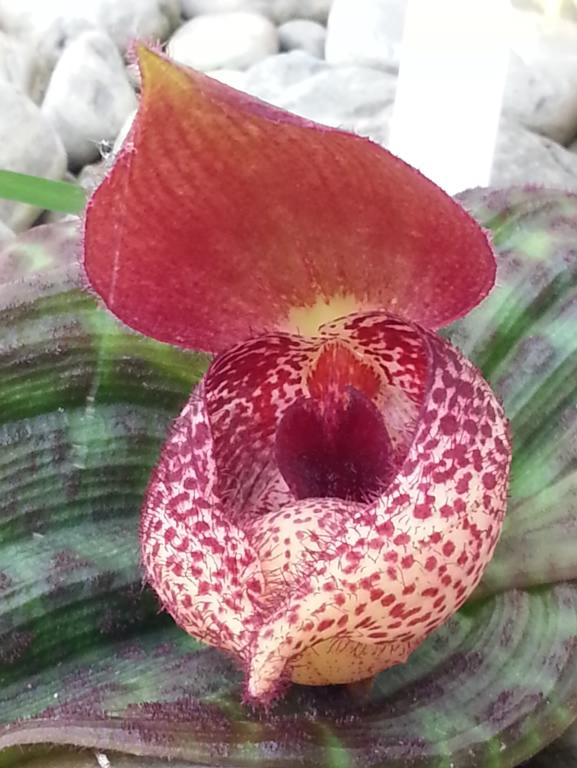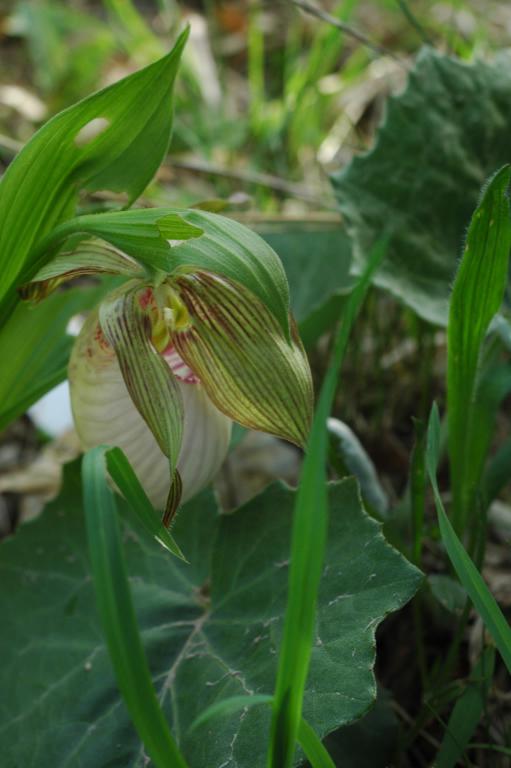KyushuCalanthe
Just call me Tom
- Joined
- Jan 12, 2008
- Messages
- 8,279
- Reaction score
- 584
The following is an assessment according to my knowledge of Cyp cultivation, species by species as of the present day. This information is not my opinion, but rather my understanding based on personal experience and communication with growers and even scientists throughout the world. I could be missing information however since many Cyp growers are not very forthcoming about their collections. Anyway, the point is to inform which species are being grown, where they are sourced, and finally the difficulty in growing them. I hope you find it useful. Of course if you know better about a particular species, please make a comment. Here's the first half of the genus. I've only included species and commonly recognized natural hybrids:
acaule - widely cultivated from both wild and artificially produced plants. Very difficult to maintain in the long term, but possible.
x alaskanum - same as C. guttatum.
x andrewsii - widely cultivated from lab propagated plants. Easy.
arietinum - widely cultivated, but difficult. Plants tend to reach flowering age much quicker than most species or hybrids.
bardolphianaum - a few in cultivation virtually all from wild collected material. Nobody's saying very much about them. Word is that they are much easier than other members of section Trigonopedia.
calceolus - widely cultivated especially in Europe. Mostly nursery propagated in origin, but some still coming out of western Siberia. Touchy in cultivation, but doable.
calcicolum - a few in cultivation with virtually all sourced out of the wild. Not as easy as C. macranthos, but growable in a cool climate.
californicum - widely cultivated from lab propagated plants. Very touchy in cultivation taking a long time to establish.
candidum - widely cultivated and fairly easy once established. Lab propagated material with a fair amount turning out to be mixed blood with C. parviflorum.
x columbianum - not widely grown. Reported to be much easier than C. montanum.
coridgerum - untold thousands of wild plants have been exported to Europe, America, and Japan over the last three decades. Most died, but a few persisted and today a few lab propagated plants are available. Culture however remains difficult.
debile - widely grown from both wild collected and lab produced stock. Fussy and hard to keep alive long term.
dickinsonianum - the word is the same as with other members of section Irapeana: essentially impossible even in their native lands. Perhaps a few smuggled specimens are available from time to time in the states and Europe.
elegans - unavailable and untried as far as I know.
fargesii - lab propagated plants becoming available in Europe. This species seems to be the easiest of the section Trigonopedia. Still rare in cultivation, but it should become more common in time. Having said that, it remains difficult to grow.
farreri - a number of plants have been exported since the mid '90s, mostly to Europe and Japan. The vast bulk of these have turned out to be C. fasciolatum.This species remains mostly an enigma in cultivation since no one is talking about it much. Rumor is that it is being grown in Europe, but is not generally available. There may be a few plants also in North America, but everyone is hush-hush. Are there any lab propagated plants out there? Maybe, but no body seems to be offering them. Word is that they are much more touchy in cultivation compared to the near relative C. fasciolatum.
fasciolatum - widely cultivated from both wild collected, and more recently, artificially propagated plants. Cultivation seems straight forward. Still difficult to get in the states, but available in Europe.
fasciculatum - few have tried to grow this one and fewer have succeeded. Very difficult species to grow and maintain. A few seedlings are offered each year here and there.
flavum - widely cultivated from both wild and artificially propagated plants. Culture is more difficult than its near relative C. reginae, but possible. It requires cool summer temperatures among other things. Not easy to get in the states, but fairly common on the European market.
formosanum - widely cultivated from mostly nursery propagated divisions and lab produced seedlings. What is remarkable is that this plant remains a little difficult to obtain, especially in the states. Very easy in milder climates, but cannot take very cold winters.
forrestii - a few wild collected plants are being grown in Europe and possibly North America. This plant seems very closely allied to both C. bardolphianum and C. micranthum, so it likely is possible to grow by diligent growers. Generally still unavailable in the trade except as wild collected, smuggled plants.
franchetii - widely cultivated, but remains quite rare in collections. Both wild collected and lab produced plants available today. Similar requirements to C. tibeticum and C. calcicolum and probably about as easy to grow, that is, a bit tricky.
froschii - not widely available, but a few wild collected plants offered each year. It can be found in both European and North American collections very infrequently. Not easy and not hard to grow.
guttatum - widely grown and moderately available. Two groups of plants are currently being cultivated: high mountain forms from SE China and Alaskan plants. They seem to be rather easy to grow in cold winter/cool summer climates, but otherwise are nearly impossible to grow in hotter areas.
henryi - widely grown and becoming more available in the US market. Many are wild collected, but many have been lab propagated too. Reported to be very easy.
x herae - unusual natural hybrid between C. reginae and C. parviflorum v. pubescens. Very rare in the wild (found only in Canada so far) and virtually unavailable in the trade. Probably fairly easy to cultivate.
himalaicum - along with C. cordigerum, many thousands have been taken from the wilds of Himalayan countries over the last 30 years or more, and few if any, have survived to this day. This plant may be in cultivation somewhere, but again, no one is saying much about it. It seems to need something folks just can't provide. A few smuggled plants available in Europe from time to time.
irapeanum - along with C. dickinsonianum and C. molle, this species seems to defy any attempt at being cultivated. Nobody seems to understand why exactly. Seedlings have been artificially produced, but none that have been deflasked have grown on compost successfully. Reports out of Germany suggest someone there has been successful and even flowered some seedlings, but no photos have been made public and this remains doubtful, at least for now. Very, very difficult species that remain unavailable. Plants have been wild collected and exported from Mexico since the late 1800s, but no reliable reports of surviving specimens exist.
japonicum - widely grown species that remains difficult to grow and apparently very difficult to flower even after being firmly established. Production from seed has been also very difficult, so plants in the trade are virtually all wild sourced. Not an easy species.
The other half to follow if this thread seems interesting to readers.
acaule - widely cultivated from both wild and artificially produced plants. Very difficult to maintain in the long term, but possible.
x alaskanum - same as C. guttatum.
x andrewsii - widely cultivated from lab propagated plants. Easy.
arietinum - widely cultivated, but difficult. Plants tend to reach flowering age much quicker than most species or hybrids.
bardolphianaum - a few in cultivation virtually all from wild collected material. Nobody's saying very much about them. Word is that they are much easier than other members of section Trigonopedia.
calceolus - widely cultivated especially in Europe. Mostly nursery propagated in origin, but some still coming out of western Siberia. Touchy in cultivation, but doable.
calcicolum - a few in cultivation with virtually all sourced out of the wild. Not as easy as C. macranthos, but growable in a cool climate.
californicum - widely cultivated from lab propagated plants. Very touchy in cultivation taking a long time to establish.
candidum - widely cultivated and fairly easy once established. Lab propagated material with a fair amount turning out to be mixed blood with C. parviflorum.
x columbianum - not widely grown. Reported to be much easier than C. montanum.
coridgerum - untold thousands of wild plants have been exported to Europe, America, and Japan over the last three decades. Most died, but a few persisted and today a few lab propagated plants are available. Culture however remains difficult.
debile - widely grown from both wild collected and lab produced stock. Fussy and hard to keep alive long term.
dickinsonianum - the word is the same as with other members of section Irapeana: essentially impossible even in their native lands. Perhaps a few smuggled specimens are available from time to time in the states and Europe.
elegans - unavailable and untried as far as I know.
fargesii - lab propagated plants becoming available in Europe. This species seems to be the easiest of the section Trigonopedia. Still rare in cultivation, but it should become more common in time. Having said that, it remains difficult to grow.
farreri - a number of plants have been exported since the mid '90s, mostly to Europe and Japan. The vast bulk of these have turned out to be C. fasciolatum.This species remains mostly an enigma in cultivation since no one is talking about it much. Rumor is that it is being grown in Europe, but is not generally available. There may be a few plants also in North America, but everyone is hush-hush. Are there any lab propagated plants out there? Maybe, but no body seems to be offering them. Word is that they are much more touchy in cultivation compared to the near relative C. fasciolatum.
fasciolatum - widely cultivated from both wild collected, and more recently, artificially propagated plants. Cultivation seems straight forward. Still difficult to get in the states, but available in Europe.
fasciculatum - few have tried to grow this one and fewer have succeeded. Very difficult species to grow and maintain. A few seedlings are offered each year here and there.
flavum - widely cultivated from both wild and artificially propagated plants. Culture is more difficult than its near relative C. reginae, but possible. It requires cool summer temperatures among other things. Not easy to get in the states, but fairly common on the European market.
formosanum - widely cultivated from mostly nursery propagated divisions and lab produced seedlings. What is remarkable is that this plant remains a little difficult to obtain, especially in the states. Very easy in milder climates, but cannot take very cold winters.
forrestii - a few wild collected plants are being grown in Europe and possibly North America. This plant seems very closely allied to both C. bardolphianum and C. micranthum, so it likely is possible to grow by diligent growers. Generally still unavailable in the trade except as wild collected, smuggled plants.
franchetii - widely cultivated, but remains quite rare in collections. Both wild collected and lab produced plants available today. Similar requirements to C. tibeticum and C. calcicolum and probably about as easy to grow, that is, a bit tricky.
froschii - not widely available, but a few wild collected plants offered each year. It can be found in both European and North American collections very infrequently. Not easy and not hard to grow.
guttatum - widely grown and moderately available. Two groups of plants are currently being cultivated: high mountain forms from SE China and Alaskan plants. They seem to be rather easy to grow in cold winter/cool summer climates, but otherwise are nearly impossible to grow in hotter areas.
henryi - widely grown and becoming more available in the US market. Many are wild collected, but many have been lab propagated too. Reported to be very easy.
x herae - unusual natural hybrid between C. reginae and C. parviflorum v. pubescens. Very rare in the wild (found only in Canada so far) and virtually unavailable in the trade. Probably fairly easy to cultivate.
himalaicum - along with C. cordigerum, many thousands have been taken from the wilds of Himalayan countries over the last 30 years or more, and few if any, have survived to this day. This plant may be in cultivation somewhere, but again, no one is saying much about it. It seems to need something folks just can't provide. A few smuggled plants available in Europe from time to time.
irapeanum - along with C. dickinsonianum and C. molle, this species seems to defy any attempt at being cultivated. Nobody seems to understand why exactly. Seedlings have been artificially produced, but none that have been deflasked have grown on compost successfully. Reports out of Germany suggest someone there has been successful and even flowered some seedlings, but no photos have been made public and this remains doubtful, at least for now. Very, very difficult species that remain unavailable. Plants have been wild collected and exported from Mexico since the late 1800s, but no reliable reports of surviving specimens exist.
japonicum - widely grown species that remains difficult to grow and apparently very difficult to flower even after being firmly established. Production from seed has been also very difficult, so plants in the trade are virtually all wild sourced. Not an easy species.
The other half to follow if this thread seems interesting to readers.


































